THDL Toolbox > Detailed Introduction
Detailed Introduction to THDL Toolbox
Contributor(s): David Germano
Tools in the traditional library include interactive catalogs on computer work stations, microfilm readers, photocopiers and so forth to allow users to search and access its collections, as well as in limited ways also compile their own collections of information. Similarly, the digital library provides integrated software systems, tools, and fonts in general to enable users to work with the collections with search and access procedures considerably more powerful than the traditional library. In particular, though, the digital library goes far beyond the limited traditional tools of a library in its enabling of users to creatively interact with the digital collections and reference materials, as well as generate new user-defined collections for their own private purposes. The simplest level of functionality includes extraction of images and composing sequenced slide-shows on line, while more advanced features are, for example, the ability to make HTML pages drawing upon library resources, compile private dictionaries, create new videos from segments of existing videos and so forth.
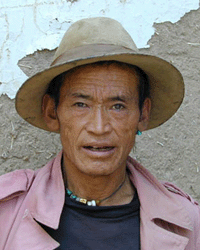
This site also provides a suite of Tibetan fonts along with software developed by THDL that enhances the use of these fonts both in word processors and on the Web. Together these tools aim to help other projects and individuals take advantage of technical work done by the Library, as well as provide a way to facilitate communication, exchange, interoperability, and project building among all scholars, students, and others interested in Tibet and the Himalayan regions. In particular, the Library is committed to developing digital tools to assist the teaching of Tibetan and Himalayan languages, literatures, environments, and cultures. The evolving multilingual capacity of the digital library system also offers the promise of a single integrated library that serves different communities with distinct language bases, as well as promote communication between them.
There are six (6) overarching types of tools, all of which have been developed with an eye toward balancing the power of the latest technology against the need to reach the broadest possible audience.
- Technical Requirements for Using THDL
- From the Field to the Web
- Technologies used in THDL
- Software designed by THDL
- Fonts and input tools
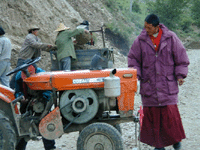
Prepping your Computer for Using THDL: Overall, access to the Library's resources requires nothing more than an internet connection to a computer running a standard browser. However, for certain advanced features, such as interactive databases, viewing movies, and so forth, additional free browser plug-ins are required for viewing. For example, Quicktime is required for viewing the video collection, Flash for the interactive maps, a VRML plug-in for interactive 3D architectural reconstructions, and a Java plug-in for using the on-line dictionary. Furthermore, fonts are required to view any special diacritic marks or non-Roman scripts, such as Tibetan, Chinese, Devanagari, and so forth. This section of the THDL Tools site provides a detailed list of these types of site-viewing tools, what they allow one to do, and the source from which they are available. All these plug-ins are downloadable without any expense to the user.
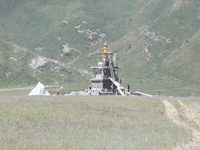
 THDL Scholar's Toolbox: Much of the information contained in the THDL collections is the product of first-hand fieldwork in the Tibetan and Himalayan cultural region. As a result, one of the central focuses of THDL has been on developing a comprehensive system for creating digital data in the field or in the library, processing it in the field, library or office, and finally disseminating it. This includes not only the tools, but also guidelines for the collection, generation, processing, and dissemination of data. In developing this system, the Library has made a strong commitment to the communities being researched so that fieldwork is not a one-way process of extraction of information but a two-way process of international community building through digital technology. It is a high priority of the library to make these tools available to the communities themselves, by use of Tibetan, Devanagari, and other indigenous scripts as well as empowering local scholars and teachers to participate from the beginning. The guidelines being developed by THDL cover three spheres of activity in the process of gathering digital data in the field: (i) data collection in the field, (ii) post-fieldwork processing, and (iii) publication and dissemination of the final product.
THDL Scholar's Toolbox: Much of the information contained in the THDL collections is the product of first-hand fieldwork in the Tibetan and Himalayan cultural region. As a result, one of the central focuses of THDL has been on developing a comprehensive system for creating digital data in the field or in the library, processing it in the field, library or office, and finally disseminating it. This includes not only the tools, but also guidelines for the collection, generation, processing, and dissemination of data. In developing this system, the Library has made a strong commitment to the communities being researched so that fieldwork is not a one-way process of extraction of information but a two-way process of international community building through digital technology. It is a high priority of the library to make these tools available to the communities themselves, by use of Tibetan, Devanagari, and other indigenous scripts as well as empowering local scholars and teachers to participate from the beginning. The guidelines being developed by THDL cover three spheres of activity in the process of gathering digital data in the field: (i) data collection in the field, (ii) post-fieldwork processing, and (iii) publication and dissemination of the final product.
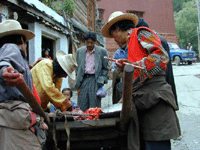
Technologies used by THDL: This section describes the technological tools used to create the infrastructure that makes the digital library possible. THDL is one of the first major implementations of an exciting new digital library initiative spearheaded by the University of Virginia and Cornell University to build a comprehensive and powerful digital library infrastructure based upon the FEDORA protocol ("Flexible Extensible Digital Object Repository Architecture"). Perhaps the most ambitious work is centered on GIS (Geographical Information Systems), which creates spatial and temporal databases of information that can be queried and output in digital cartographic displays. We are integrating GIS software into the entire fabric of the digital library system, such that videos, images, texts, satellite images, ethnographic studies and so forth are all integrated by place and time. XML (eXtensible Markup Language) is the language of the Web for the future, but requires the creation of special resources called DTDs (Document Type Definitions) tailor-made for specific purposes to be utilized fully. We have thus created DTDs for use with cataloging and encoding Tibetan literature, as well as for gazetteer documentation of places. For image work, we are using UVA's DTD called "General Descriptive Modeling Scheme" (GDMS), which allows the creation of powerful relational groupings of images.
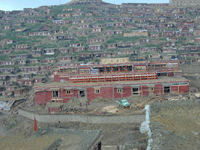
Software available through THDL: In a digital context, scholarship on the Tibetan and Himalayan region requires specific tools, such as a variety of fonts and input methods for text in Tibetan and other Asian languages. Within the digital library, then, we are developing a variety of other suites of tools and systems from the ground up which support the relevant scripts, are suited to the needs and concerns of Tibetan and Himalayan Studies, and are open-source standard-based resources fully integrated within the digital library. Another major initiative lies in working with videos, in which regards we have developed the Savant initiative with UVA, UCLA, and CRNS to build a comprehensive Web-based system for cataloging, analyzing, and presenting video and audio with multi-lingual transcripts. On the instructional side, we have worked with UVA on a system know as E-folio for interactive management of class discussions and on-line building of Web assignments. Finally, we have put extensive efforts into support for Asian Fonts and input systems, especially Tibetan, as detailed directly below.
Fonts and Input Tools: This section provides the specialized fonts and input tools needed to work with Asian languages over the Web. Our major focuses are on Tibetan, Chinese, Devanagari, and Japanese script support in terms of enabling users to gain access to free fonts for viewing these languages in THDL, as well as building in support for the input of these languages within THDL. We have placed a special emphasis on developing new fonts and tools for use of Tibetan script in computers and on the Web,given its centrality and the limited nature of resources for work with Tibetan in digital contexts.
Our Commitment to Free and Open Software
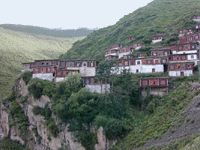
It is a central policy of THDL that all tools necessary for viewing the site as well as all the tools distributed by the Library be freely available to all. In light of this, tools for viewing the site are available for free download from various distributors. Similarly, all the digital media tools — fonts, input software, and the like — either developed or distributed by the Library are freely provided under some open source license. Most of the software developed within THDL is distributed under the THDL Open Community License. The Tibetan fonts are made available through a joint venture between the Tibetan Computer Company (the font's creator), the Trace Foundation, and THDL. These are covered by the GNU General Public License. Users should understand the contents of these licenses prior to downloading any material. They are meant solely to keep these materials free and open so as to promote the advancement of knowledge concerning the Tibetan and Himalayan geographic and cultural region in an evironment free from the interference of commercial concerns.